Cards In This Set
| Front | Back |
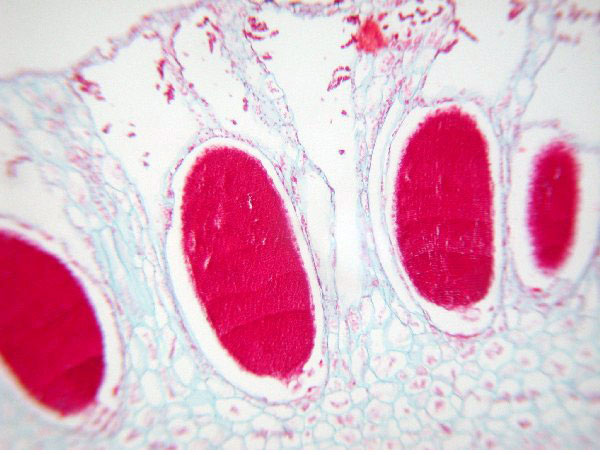 What is this? BONUS: What is carried here? |
Lab 6: Non-Vascular Plants; Hepatophyta
Genus Marchantia (liverworts): Antheridiophore (100x) BONUS: the antheridium is borne on an antheridiophore, a stalk-like structure that carries the antheridium at its apex. |
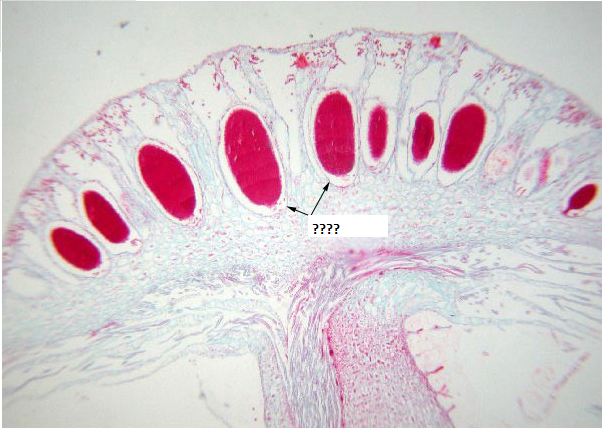 What are the arrows pointing at? BONUS: What is produced here? |
Lab 6: Non-Vascular Plants; Hepatophyta
Genus Marchantia (liverworts): Antheridiophore (40x). Antheridia. BONUS: An antheridium or antherida (plural: antheridia) is a haploid structure or organ producing and containing male gametes (called antherozoids or sperm). |
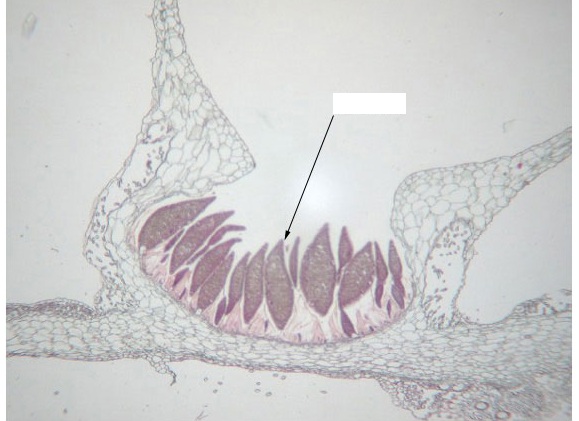 What is the arrow pointing at? BONUS: What is produced here? |
Lab 6: Non-Vascular Plants; Hepatophyta
Genus Marchantia (liverworts): Cupsule. Gemmae. BONUS: Asexual reproduction is by production of gemmae in gemmae cups or cupules that are produced on male and female plants. The gemmae will produce male or female gametophytes depending on what type of thallus produced them. |
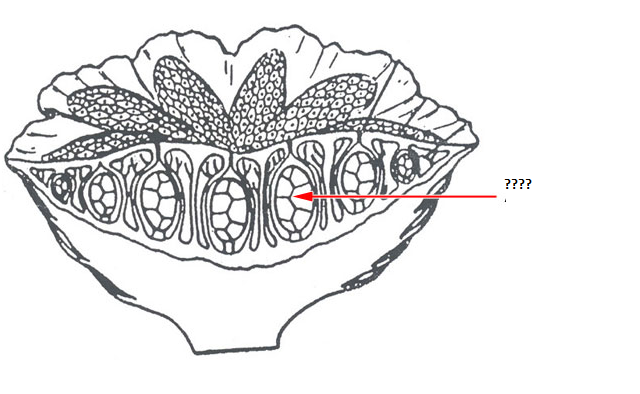 What is the arrow pointing at? BONUS: What is produced here? |
Lab 6: Non-Vascular Plants; Hepatophyta
Genus Marchantia (liverworts): Antheridiophore. Antheridium. BONUS: An antheridium or antherida (plural: antheridia) is a haploid structure or organ producing and containing male gametes (called antherozoids or sperm). |
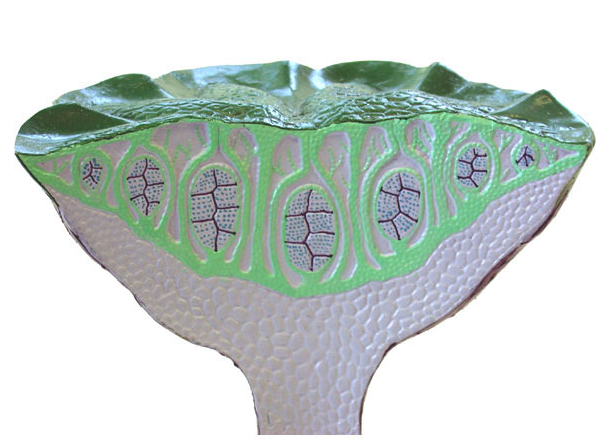 What is this? BONUS: What is produced here? |
Lab 6: Non-Vascular Plants; Hepatophyta
Genus Marchantia (liverworts): Antheridiophore. BONUS: the antheridium is borne on an antheridiophore, a stalk-like structure that carries the antheridium at its apex. |
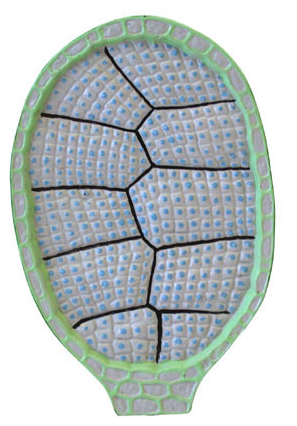 What is this? BONUS: What is produced here? |
Lab 6: Non-Vascular Plants; Hepatophyta
Genus Marchantia (liverworts): Antheridium. BONUS: An antheridium or antherida (plural: antheridia) is a haploid structure or organ producing and containing male gametes (called antherozoids or sperm). |
|
What are the arrows pointing at?
BONUS: What is produced here?
|
Lab 6: Non-Vascular Plants; Hepatophyta
Genus Marchantia (liverworts): Archegoniohphore. Egg. Archegonia. BONUS: An ovum or female gamete are produced and contained within a multicullular structure or organ of the archegonium. |
|
What are the arrows pointing at?
BONUS: What structure are these produced on?
|
Lab 6: Non-Vascular Plants; Hepatophyta
Genus Marchantia (liverworts): Archegonium. Egg. Ventor. Neck. BONUS: An archegonium (pl: archegonia) is a multicellular structure or organ of the gametophyte phase of certain plants, producing and containing the ovum or female gamete. |
|
What are the arrows pointing at?
BONUS: What structure are these produced on?
|
Lab 6: Non-Vascular Plants; Hepatophyta
Genus Marchantia (liverworts): Archegonium. Egg. Ventor. Neck. BONUS: An archegonium (pl: archegonia) is a multicellular structure or organ of the gametophyte phase of certain plants, producing and containing the ovum or female gamete. |
|
What is the arrow pointing at?
BONUS: What is produced here?
|
Lab 6: Non-Vascular Plants; Hepatophyta
Genus Marchantia (liverworts): Archegoniophore. Archegonia. BONUS: An archegonium (pl: archegonia) is a multicellular structure or organ of the gametophyte phase of certain plants, producing and containing the ovum or female gamete. |
|
What is this?
BONUS: What is produced here?
|
Lab 6: Non-Vascular Plants; Hepatophyta
Genus Marchantia (liverworts): Archegoniophore. BONUS: An archegonium (pl: archegonia), a multicellular structure or organ of the gametophyte phase of certain plants, producing and containing the ovum or female gamete is produced here. |
|
What is this?
BONUS: What is produced here?
|
Lab 6: Non-Vascular Plants; Hepatophyta
Genus Marchantia (liverworts): Archegonia. BONUS: An archegonium (pl: archegonia), a multicellular structure or organ of the gametophyte phase of certain plants, producing and containing the ovum or female gamete is produced here. |
|
What are the arrows pointing at?
BONUS: What is produced here?
|
Lab 6: Non-Vascular Plants; Hepatophyta
Genus Marchantia (liverworts): Archegonia. Vector. Neck. BONUS: Eggs. |
|
What is the arrow pointing at?
BONUS: What is produced here?
|
Lab 6: Non-Vascular Plants; Hepatophyta
Genus Marchantia (liverworts): Archegoniophore. Sporophyte. BONUS: The sporophyte produces spores by meiosis. |
|
What is this?
BONUS: What is produced here?
|
Lab 6: Non-Vascular Plants; Hepatophyta
Genus Marchantia (liverworts): Sporangium. BONUS: The case or sac in which spores are produced, also called spore case . |



